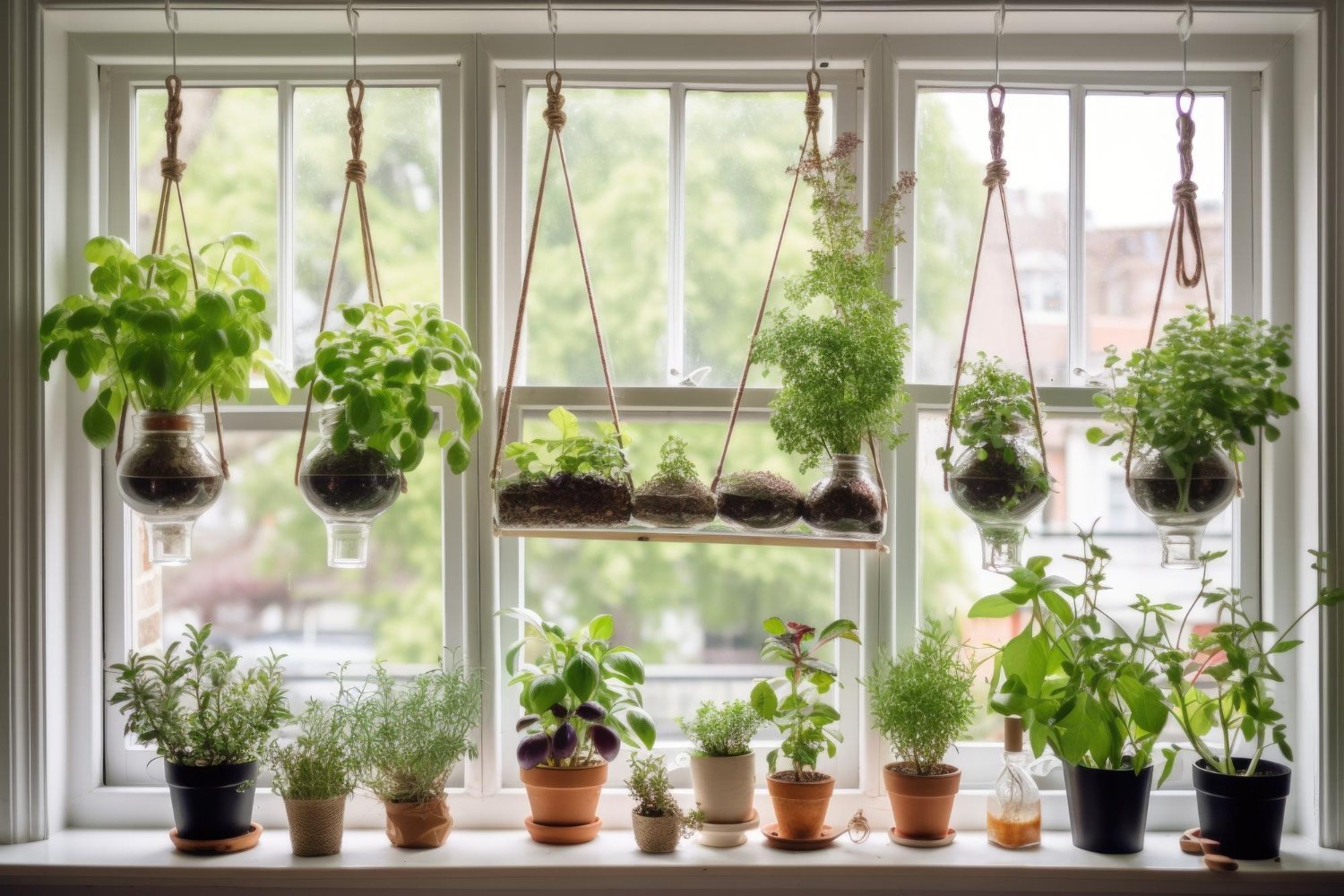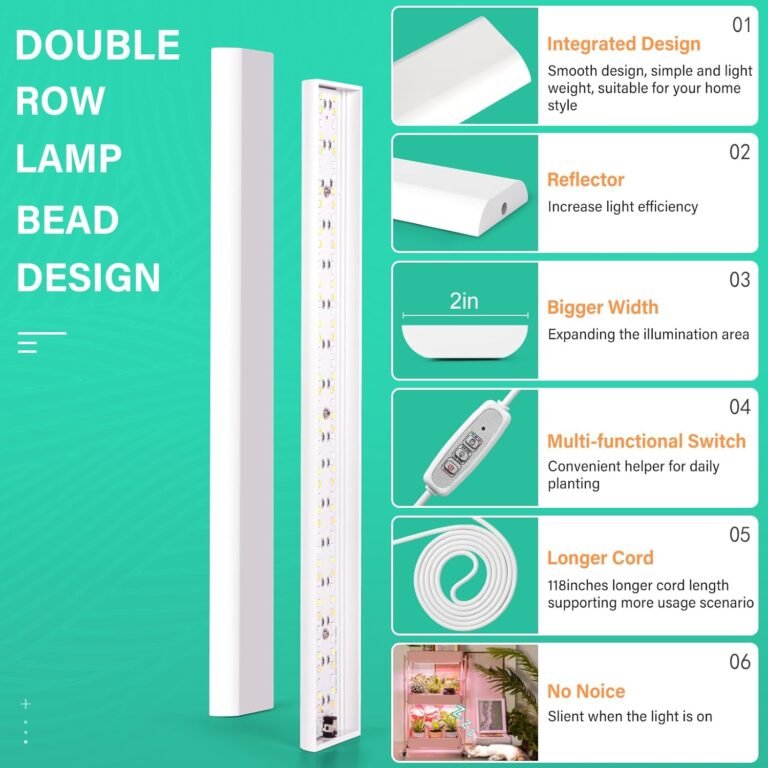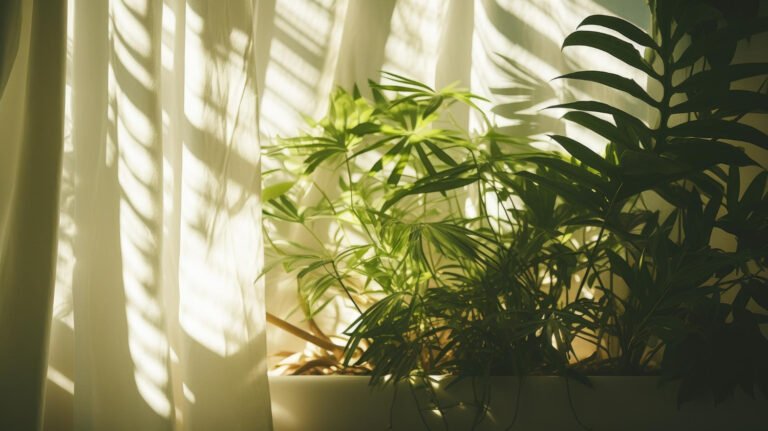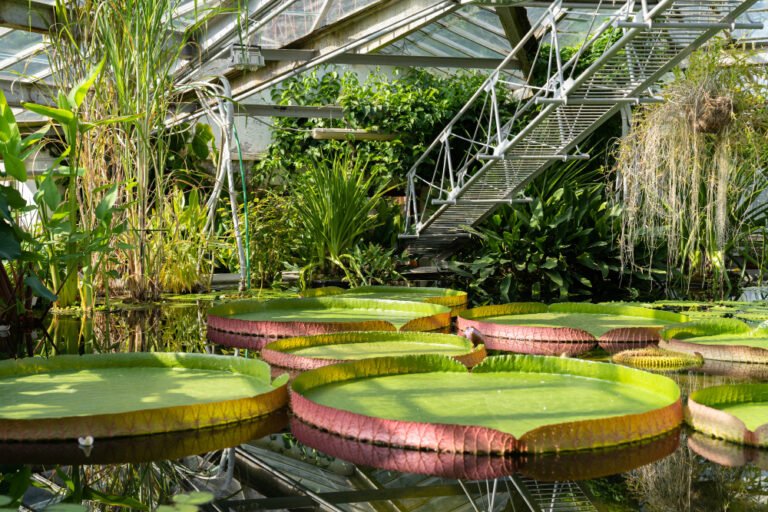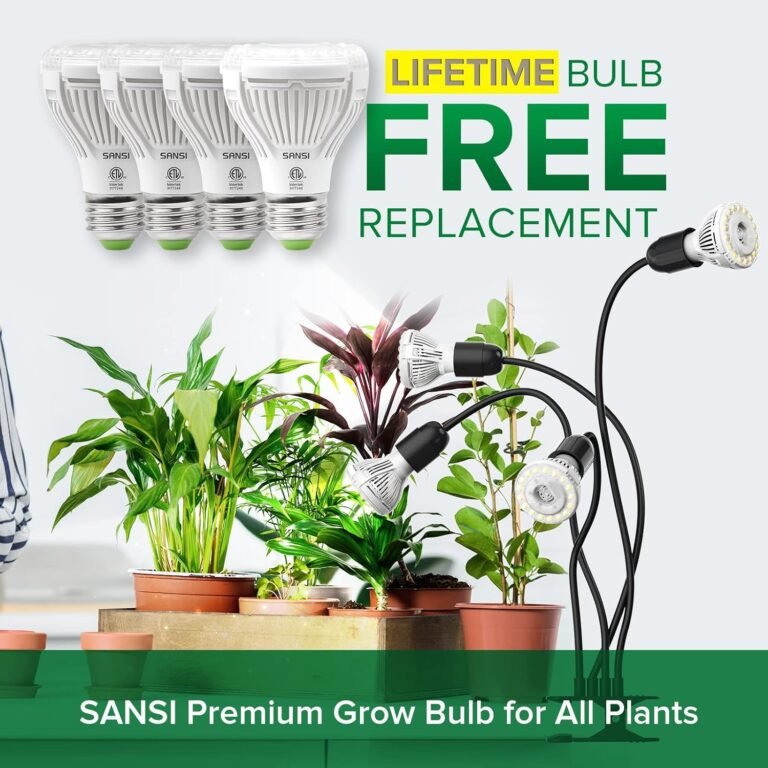Indoor hanging plants can truly invigorate your living spaces, adding a breath of fresh air and vitality. But have you ever asked yourself which plants would work best in your hanging baskets or planters, or perhaps how they would change the vibe of your home?

Indoor hanging plants are a diverse group of greenery, each with unique characteristics. They bring a natural aesthetic to any indoor setting, purify the air, and can even boost your mood. The best indoor hanging plants are those that not only add charm but are also easy to care for, such as spider plants, bird’s nest fern, and air plants. All you need is the right indoor hanging plant planter, optimal light conditions, and proper care, and you’ll be on your way to having your own indoor garden sanctuary.
In this article, we’ll take you on a journey through the world of indoor hanging plants. We’ll explore the best options for your home, how to care for them, and tips on hanging planters and baskets. We’ll even delve into the appeal of unique hanging plant species like the string of pearls and the mistletoe cactus. If you’re ready to breathe new life into your living space, then keep reading.
A Detailed Explanation of Indoor Hanging Plants
Did you know that indoor hanging plants serve more than just a decorative purpose? They can also purify the air and regulate humidity levels. Some popular indoor hanging plants, like the spider plant and bird’s nest fern, are particularly effective at these tasks. Indoor hanging plants are a wonderful addition to any living space, not only for their aesthetic appeal but also for their remarkable ability to purify the air and regulate humidity levels. In fact, some of the most popular indoor hanging plants, such as the spider plant and bird’s nest fern, are particularly effective at these important tasks. By introducing these plants into your home or office, you can create a healthier and more pleasant environment for yourself and those around you. So why not consider adding some beautiful hanging plants to your indoor decor today?
Spider Plants: The Perfect Beginner’s Choice

The spider plant is one of the most common indoor hanging plants due to its adaptability and resilience. It can handle moderate light but prefers bright indirect light, making it suitable for rooms with bright windows. The plant’s distinctive long vines and arching foliage, often with variegated green and white coloration, make it an appealing addition to any hanging pot or a hanging basket too.
Spider plants are excellent for beginners due to their minimal care requirements. Water them moderately, keep them in indirect sunlight, and they will thrive. One unique characteristic of spider plants is their ability to produce baby plants, or ‘spiderettes’, which dangle from the parent plant and can be easily propagated for more plants.
Bird’s Nest Fern: A Touch of Tropical Greenery

The bird’s nest fern brings a touch of tropical plant vibrancy to indoor settings. Unlike the spider plant, the bird’s nest fern has ripple-edged fronds that form a distinctive rosette, resembling a bird’s nest. This plant thrives in indirect light and higher humidity levels, making it a fantastic choice for a bathroom or kitchen. Its deep green, heart-shaped leaves add a dramatic flair to any hanging planter.
Bird’s nest fern requires consistent moisture in its soil, making it a bit more challenging to maintain than the spider plant. However, its unique and striking appearance makes the effort worthwhile.
Air Plants: The Soil-less Wonders

Air plants, or Tillandsias, are unique hanging houseplants that do not require soil to grow. They can absorb nutrients and moisture through their leaves, making them perfect for unique hanging houseplant installations where traditional pots can’t be used.
Their light green foliage and diverse forms, from bushy to spiky, add an interesting textural element to any indoor decor. The plant thrives in bright, indirect light, making it suitable for well-lit areas of your home.
Here’s everything else you need to know about taking care of these captivating indoor hanging plants and others to make the most of your indoor gardening experience.
Creating the Perfect Environment for Your Plants
When it comes to growing indoor and hanging plants in the house, it’s important to provide them with the right conditions for optimal growth. One key factor is ensuring they have enough space to spread out and thrive. Additionally, these plants require proper lighting, moisture, and nutrients to stay healthy. With the right care and attention, your indoor hanging plants can brighten up your home and purify the air while adding a touch of natural beauty to your decor.
Understanding Light Requirements
Most hanging plants prefer bright indirect light, or sun exposure which means they like being near a bright window but not in direct sun. Plants such as the spider plant, trailing jade plants, and Swiss cheese plant will do well in these conditions. However, some plants, like the Christmas cactus and devil’s ivy, can handle moderate light and will still thrive away from the window. Understanding each plant’s light needs is crucial to their survival and growth.
Watering and Soil Preferences
Watering needs vary among different indoor hanging plants. While the bird’s nest fern and Boston fern prefer consistently moist soil, others trailing plants such as the string of hearts and pearls plant prefer their soil to dry out between waterings. Overwatering is a common issue with indoor plants, often leading to root rot and plant death.
Many hanging plants also have specific soil requirements. For example, the string of pearls trailing plant thrives in well-draining cactus or succulent soil, while the moisture-loving maidenhair fern prefers a more organic, peat-based mix.
Choosing the Right Planter
When it comes to planters, there are various options available such as hanging baskets, pots, and even creative DIY alternatives. Consider the plant’s growth pattern before choosing. Plants with trailing stems, like the English ivy or the golden pothos, look great in hanging baskets where their long vines can drape down freely. On the other hand, compact plants like the bird’s nest fern may look better in a pot.
Going Beyond the Green: Colorful and Unique Hanging Plants
Adding a variety of plants to your indoor garden can create a dynamic, vibrant space.
Foliage with Flair: The Polka Dot Plant

The polka dot plant is a popular choice for adding a splash of color to your indoor garden. This plant has heart-shaped leaves that come in a variety of colors, including pink, red, and white. It’s a compact plant, making it perfect for hanging planters in smaller spaces. This plant likes bright, indirect light and regular watering, but don’t let it get too soggy!
Intriguing Shapes: The String of Pearls

The string of pearls plant is a trendy plant known for its unique, round “pearl” leaves dangling stems that trail down in long vines, making it a perfect choice for a hanging planter. It prefers bright light and well-draining soil. Be sure not to overwater it – let the soil dry out completely between watering sessions.
Flowering Beauties: The Chenille Plant

The chenille plant, or red-hot cat’s tail, stands out with its fuzzy red and white flowers that hang in long, trailing stems, resembling a cat’s tail. This plant likes bright light and regular watering. It’s a tropical plant that can bring an exotic touch to your indoor garden.
There are many more options to explore in the world of indoor hanging plants. Whether you’re a beginner or a seasoned indoor gardener, these best hanging plants can bring a refreshing touch of nature to your indoor spaces.
Propagating Indoor Hanging Plants: A Rewarding Endeavor
Propagating indoor hanging plants can be a truly rewarding endeavor for plant enthusiasts and green thumbs alike. Not only does it offer the opportunity to expand your indoor jungle, but it also allows you to witness the fascinating process of new life emerging from cuttings or seeds. The propagation journey begins with selecting healthy parent plants, ensuring their optimal growth conditions, and then carefully snipping and nurturing cuttings or sowing seeds. Witnessing these cuttings develop roots and grow into vibrant, independent plants can be incredibly gratifying, fostering a sense of accomplishment and connection to nature. As these young plants mature and flourish in their hanging baskets, they infuse your living spaces with natural beauty, purify the air, and create a serene and calming atmosphere. The sense of pride and joy that comes with successfully propagating and caring for these indoor hanging plants makes the endeavor truly fulfilling and motivates enthusiasts to continue expanding their green oasis.
Propagating through Stem Cuttings: The English Ivy
English ivy, or Hedera helix, is an evergreen vine that’s perfect for hanging baskets due to its long, trailing, thin stems. It’s easily propagated through stem cuttings. Simply cut a 4-6 inch piece from the tip of a stem, remove the leaves from the bottom half, and place it in a jar of water. Once roots appear, you can plant it in soil.
Division Method: The Spider Plant
Spider plants, or Chlorophytum comosum, reproduce through ‘spiderettes’ – small plantlets that grow from the mother plant. These can be easily separated and planted in soil to grow new spider plants. It’s an easy and quick method of propagation, perfect for sharing these resilient plants with friends and family.
Leaf Cuttings: The Succulent String of Pearls
The string of pearls plant, with its succulent, pea-like leaves, can be propagated by taking a cutting of a stem and placing it in a well-draining potting mix. Make sure the soil is kept lightly moist until the cutting establishes roots.
Final Thoughts
Indoor hanging plants are more than just pretty faces; they can significantly improve your living environment, boosting mood, purifying air, and adding a calming, natural touch to your home. From the beginner-friendly spider plant to the tropical bird’s nest fern, to the soil-less wonder of air plants, there are hanging plants to suit everyone’s taste.
Whether you decide to bring the vibrant color of the polka dot plant into your space, the intriguing shapes of the string of pearls, or the floral beauty of the chenille plant, you’re on your way to creating an indoor garden oasis. Remember, the key is understanding each plant’s light, watering, and soil requirements. It may be a bit of a learning curve initially, but the reward of flourishing, healthy plants is well worth the effort. Happy indoor gardening!
Frequently Asked Questions
What are the easiest indoor hanging plants to care for?
Add some greenery to your home with easy-to-care-for indoor hanging plants like spider plants, English ivy, and golden pothos. They purify the air and promote a sense of calm. Try them out and enjoy the benefits of low-maintenance plants in your home.
What are the best flowering indoor hanging plants?
Indoor hanging plants are beautiful but need specific care conditions. Research their needs and provide the right care for optimal growth. With attention and care, they will thrive and add beauty to your home.
Can I hang indoor plants in any room?
Indoor plants bring life and color to any room, but keep in mind their light requirements. Bright light plants like succulents are great for rooms with natural light, while snake plants or peace lilies work for low light rooms. Some plants like humid environments, so get creative but do your research first.
What are some pet-safe indoor hanging plants?
As a helpful AI-powered assistant, I want to remind pet owners that some indoor plants can be harmful to their furry friends. Consider adding spider plants or Boston ferns to your home decor, as they are safe for cats and dogs. Enjoy adding greenery to your space without worrying about your pets’ safety.
What is the best method for watering hanging plants?
Different plants have different watering needs, so be sure to research what your specific plant requires. Consider whether to water in place or remove the plant to water it separately. If you do remove it, let excess water drain before returning it. This will help your plants thrive.

